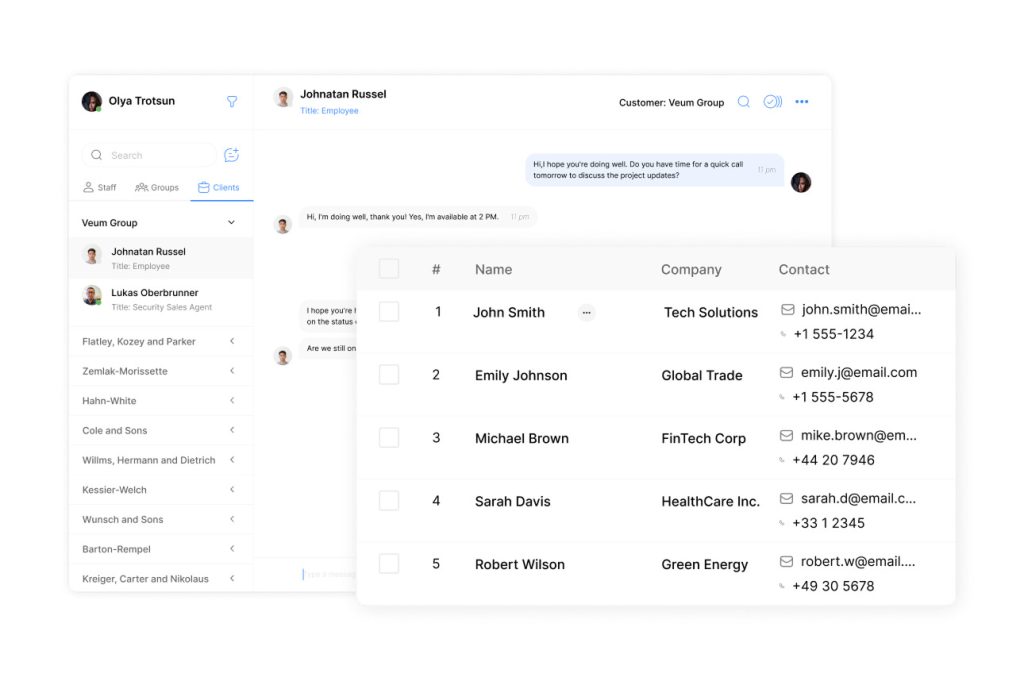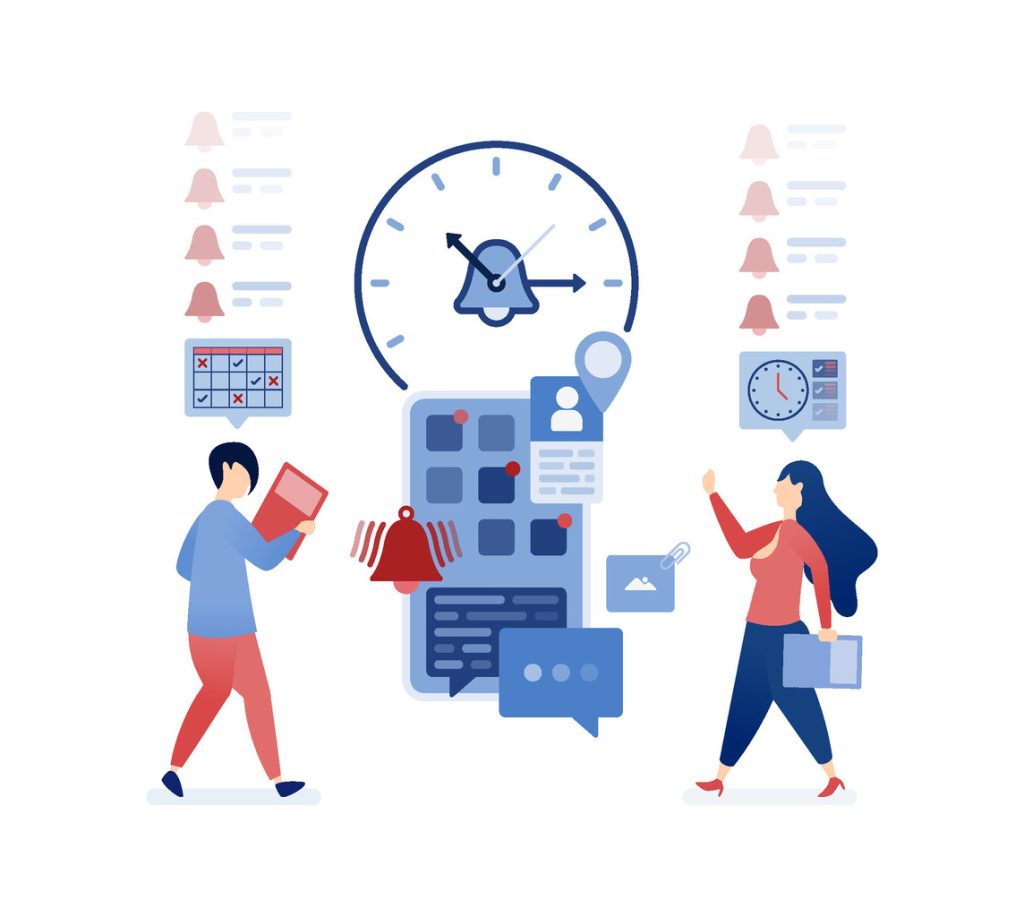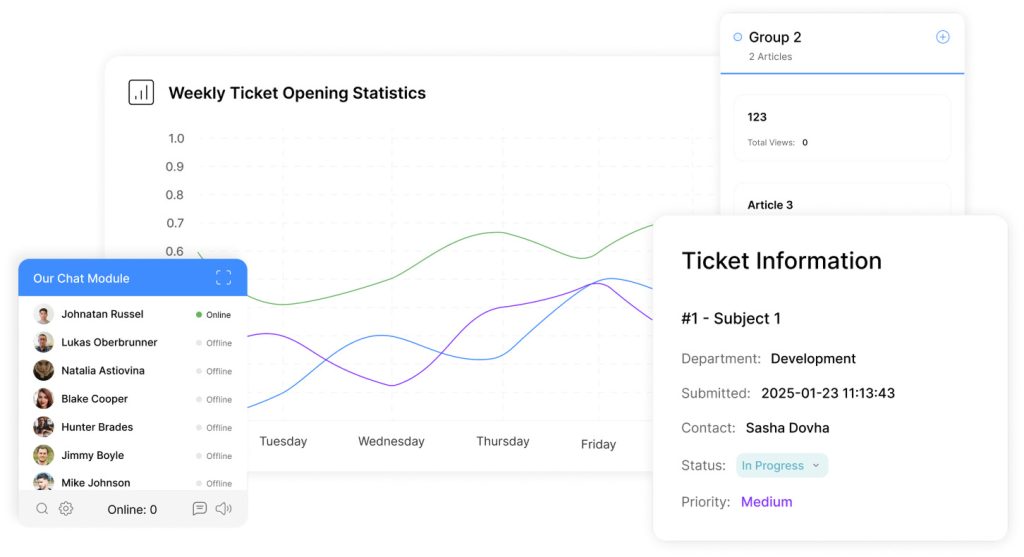Pros and Cons of Using Group Chat in Business

Modern workplaces rely on digital collaboration tools, such as group chat, to bridge communication gaps between teams and departments. Real-time messaging platforms now support conversations with up to 10,000 participants, enabling organizations to streamline workflows across global offices. These systems often use automated sequencing to manage message flow, helping maintain clarity even in large-scale discussions.
While instant communication accelerates decision-making, business leaders must carefully weigh efficiency gains against potential distractions. Poorly managed threads can easily overwhelm employees. Tools offering SMS access or QR code entry simplify coordination, but require strategic oversight to sustain productivity.
These platforms aim to strike a balance between flexibility and structure. Automated features manage message order and participant permissions, creating organized environments for idea exchange. Companies that adopt group chat solutions often experience faster problem-solving—but only when staff are trained to avoid information overload.
Successful implementation depends on understanding both the capabilities and limitations of the platform. Organizations that assess their communication needs in advance typically see better outcomes. Clear protocols empower teams to harness the speed of real-time collaboration while minimizing distraction.
Key Takeaways
- Supports collaboration across departments and locations with instant messaging
- Scales to accommodate thousands of participants in structured conversations
- Requires evaluation of productivity impacts before adoption
- Uses automated systems to manage message flow and permissions
- Balances efficiency gains with potential workflow interruptions
- Demands clear usage guidelines to maximize benefits
Introduction: The Rise of Group Chat in American Business

Over the past decade, business communication has shifted dramatically toward instant messaging. Where email once dominated, dynamic chat platforms now enable real-time collaboration across departments and time zones. Platforms like Slack and Microsoft Teams have evolved from simple messaging tools into multifunctional work hubs that support file sharing, video conferencing, and workflow automation.
Overview of Collaborative Platform Evolution
The transition from email to real-time messaging reflects changing workplace priorities. Early platforms offered little more than basic text exchange. Today’s solutions integrate with CRMs and project management systems, offering enterprise-grade security, automation, and AI-powered insights to support speed and cross-functional collaboration.
| Period | Technology | Key Advancement |
|---|---|---|
| 2010-2015 | Basic Messaging | Real-time text exchange |
| 2016-2020 | Integrated Systems | File sharing & app connectivity |
| 2021-Present | AI-Enhanced Platforms | Predictive analytics & automation |
Current Trends in Business Communication
Recent data shows 78% of U.S. companies use dedicated collaboration platforms as their primary communication channel.
“The right tools don’t just transmit information – they create connective tissue between teams,”
notes a Microsoft productivity report. Organizations prioritize systems that reduce meeting frequency while maintaining alignment, with 63% of managers reporting improved project visibility through centralized messaging hubs.
Benefits of Group Chat for Collaboration
Real-time communication platforms have become indispensable for modern teams seeking competitive advantages. These systems transform how colleagues connect, merging structured workflows with spontaneous interactions that drive innovation.
Quick Idea Exchange and Instant Feedback
Dynamic messaging systems accelerate creative processes by letting teams share concepts like digital hot potatoes. Members can attach mockups or data visualizations mid-conversation, receiving immediate input that refines ideas before they cool. A project manager might post a campaign draft at 10 AM and have finalized revisions by lunch.
This rapid iteration cycle prevents bottlenecks that traditionally stalled progress. Teams report 40% faster approval processes when using visual collaboration tools, according to a 2023 workplace productivity survey. The ability to tag colleagues ensures relevant feedback reaches decision-makers without flooding unrelated channels.
Building Team Bonding and Belonging
Remote employees often miss the watercooler moments that cement office relationships. Shared digital spaces recreate this camaraderie through pet photo Fridays or virtual coffee breaks. One HR director notes:
“Our retention rates improved 18% after implementing casual chat threads for non-work banter.”
New hires integrate faster when they can ask quick questions without formal meetings. These organic interactions foster trust that translates into smoother collaboration during crunch periods. Teams maintaining active social channels show 27% higher cross-departmental cooperation metrics.
Improved Productivity Through Real-Time Communication

Organizations now operate at decision velocities unimaginable a decade ago. Immediate interaction tools reshape how teams address challenges, transforming multi-day processes into hour-long resolutions. This acceleration comes from platforms that merge structured workflows with spontaneous dialogue.
Faster Decision-Making Processes
Urgent issues no longer wait for calendar invites. A marketing team can approve campaign tweaks during a product launch by tagging stakeholders in dedicated threads. Project managers report resolving 68% of roadblocks within two hours using real-time platforms, compared to 22-hour delays via email chains.
Cross-functional alignment happens organically when specialists from different departments contribute simultaneously. Time-sensitive projects benefit most – developers might troubleshoot API errors with customer support agents in minutes rather than days. One tech director states:
“Our sprint cycles shortened by 40% when we moved critical approvals to messaging systems.”
Global teams gain particular advantages. Colleagues in Tokyo and New York can finalize budget allocations before either office closes. However, leaders must balance speed with depth – complex decisions still require dedicated analysis outside rapid-fire exchanges.
Real-time systems excel at maintaining momentum. Automated message threading keeps conversations organized, while @mentions ensure key voices aren’t drowned out. Teams using these protocols achieve 31% faster milestone completions according to 2024 productivity studies.
Time Efficiency and Streamlined Conversations
Efficient messaging systems have become critical in eliminating unnecessary corporate rituals. Organizations now bypass traditional meeting marathons by handling routine matters through structured digital dialogues. This shift preserves calendars for strategic work while maintaining team alignment.
Minimizing the Need for Lengthy Meetings
Project managers resolve 68% of operational roadblocks within two hours using real-time platforms. Immediate exchanges replace scheduling headaches – a marketing team approves copy edits via threaded discussions, while developers troubleshoot bugs through dedicated channels.
Cross-functional groups address multiple priorities simultaneously. Sales and support teams might refine client onboarding processes in one thread while discussing quarterly targets in another. Time-sensitive decisions no longer wait for vacant conference rooms.
“We reclaimed 12 hours weekly by moving status updates to messaging channels,”
notes a tech startup COO. Automated message threading keeps discussions organized, allowing participants to contribute when schedules permit – particularly valuable for global teams spanning time zones.
Key advantages emerge when organizations reserve meetings for complex strategy sessions. Routine approvals and data requests flow through persistent chat histories, reducing preparation and follow-up work. Teams maintain momentum without constant context-switching between video calls and inboxes.
Group Chat: A Double-Edged Sword

Digital communication tools create a paradox for modern organizations. While enabling rapid information exchange, they demand strategic oversight to prevent erosion of critical thinking. This tension forms the core challenge of contemporary workplace dynamics.
Understanding the Balance Between Speed and Clarity
Real-time platforms deliver immediate results like caffeine boosts – energizing but fleeting. Teams resolve urgent matters quickly but risk bypassing deeper analysis. A 2023 MIT study found 62% of rushed decisions made through messaging systems required later correction.
Three critical conflicts emerge:
- Instant approvals vs. documented audit trails
- Spontaneous brainstorming vs. structured planning
- Multitasking efficiency vs. cognitive overload
“We set ‘decision thresholds’ – minor issues get chat resolutions, major ones require structured reviews,”
explains a Fortune 500 operations director. This approach maintains momentum while protecting complex processes.
Successful organizations implement tiered protocols. Time-sensitive updates flow through quick conversations, while strategic initiatives use threaded discussions with approval checkpoints. Automated reminders help teams transition between communication modes without losing velocity.
The true challenge lies in recognizing when rapid exchanges enhance outcomes versus when they create future rework. Regular audits of communication patterns help teams refine their approach, ensuring tools serve objectives rather than dictate workflows.
Drawbacks and Challenges of Group Chat Implementation
The convenience of instant messaging comes with hidden challenges affecting employee well-being. While these tools enable rapid coordination, their constant presence reshapes workplace dynamics in ways that demand careful management.
Mental Fatigue and Distraction
Persistent notifications create cognitive overload similar to attending back-to-back meetings. Workers juggle multiple threads while trying to complete complex tasks, leading to 40% longer completion times for focused work according to Stanford research. One project manager observes:
“Our teams feel mentally drained from tracking seven different channels simultaneously.”
This “always-on” environment makes it difficult to distinguish critical updates from casual chatter. Many employees report checking platforms 15+ times hourly, fracturing concentration.
Escalation of ASAP Culture and Over-Communication
Real-time systems condition teams to treat every message as urgent. A 2023 Harvard Business Review study found 73% of professionals feel pressured to respond immediately, even to non-critical requests. This artificial urgency:
- Reduces time for strategic thinking
- Creates anxiety about missing key discussions
- Leads to rushed decisions requiring later revisions
Organizations must establish clear protocols to prevent communication tools from dictating unhealthy work rhythms. Setting “quiet hours” and prioritizing threaded conversations helps maintain productivity without sacrificing responsiveness.
Overcoming Interruptions and Maintaining Focus

Continuous digital engagement reshapes workplace productivity landscapes. Employees face fragmented attention spans as persistent notifications fracture concentration. Research shows it takes 23 minutes to regain focus after switching tasks – a costly drain on complex projects.
Strategic Approaches to Preserve Cognitive Resources
Forward-thinking companies combat attention residue through structured protocols. Time-blocking techniques create protected periods for deep analysis, separating collaborative exchanges from focused work. One tech firm reduced project delays by 34% after implementing mandatory “no message zones” during critical workflows.
| Strategy | Implementation | Impact |
|---|---|---|
| Designated Check-Ins | Scheduled platform reviews 3x daily | 47% fewer interruptions |
| Priority Channels | Color-coded urgent threads | 62% faster crisis response |
| Auto-Archive Rules | Inactive discussions hidden after 48h | 31% cleaner interface |
Psychological barriers often undermine these efforts. Many professionals feel compelled to maintain constant availability.
“We train managers to model focused work habits – closing message windows during strategic sessions,”
explains a productivity consultant. This cultural shift helps teams reclaim mental space for innovation.
Successful organizations balance connectivity with concentration. Clear guidelines about response expectations reduce anxiety while preserving workflow integrity. Teams that master this equilibrium report 28% higher output quality and 19% faster project completion rates.
The Impact of Group Chat on Company Culture and Morale
Workplace morale faces new tests in the era of instant digital dialogue. Platforms enabling constant connectivity often create invisible fractures in team dynamics, despite their efficiency benefits. Organizations must address unintended cultural consequences that emerge from over-reliance on real-time exchanges.
Silent Agreements and Communication Gaps
Assumed consensus becomes a silent productivity killer in fast-paced digital environments. Teams may interpret a colleague’s lack of response as approval, leading to misaligned expectations. One operations manager states:
“We lost three weeks of development time because designers didn’t see critical feedback buried in threads.”
This phenomenon escalates when remote workers join discussions across time zones. Vital context disappears when participants jump between multiple conversations, creating version control issues for project documentation.
The Hidden Cost of 24/7 Availability
Constant connectivity reshapes employee engagement patterns. Professionals report checking work platforms 22 times daily on average, according to a 2024 Cornell University study. This behavior fuels “return anxiety” – the stress of facing 150+ unread messages after brief absences.
| Cultural Impact | Frequency | Mitigation Strategy |
|---|---|---|
| Assumed consensus errors | Occurs in 68% of teams | Mandatory confirmation pings |
| Cross-timezone exclusion | 43% of global staff affected | Dedicated recap channels |
| Notification fatigue | 82% report mental drain | Scheduled focus blocks |
Forward-thinking companies implement “message amnesty” periods. These designated intervals allow teams to archive outdated threads without review, reducing the burden of perpetual catch-up. A balanced approach preserves the speed of real-time tools while protecting organizational cohesion.
Integrating Asynchronous Communication Methods

Modern teams face a critical balancing act between responsiveness and thoughtful analysis. Forward-thinking organizations now blend real-time interactions with delayed-response systems to optimize decision quality. This hybrid approach preserves momentum while creating space for strategic thinking.
Optimal Moments for Shifted Discussions
Immediate messaging thrives when resolving server outages or approving time-sensitive contracts. However, complex initiatives like product launches demand deeper reflection. 37signals advocates making rapid exchanges “the exception rather than the rule,” reserving them for truly urgent scenarios.
| Situation | Preferred Method | Average Resolution Time |
|---|---|---|
| Client emergency | Real-time | 18 minutes |
| Policy changes | Asynchronous | 72 hours |
| Budget planning | Asynchronous | 5 days |
Three clear indicators signal when to transition:
- Multiple stakeholders need consultation across time zones
- Decisions require financial or legal review
- Topics involve long-term strategic implications
Teams using structured criteria reduce rushed decisions by 41%, according to Asana’s 2024 workflow report. Scheduled reflection periods allow contributors to analyze data and craft nuanced responses. This prevents critical details from being overlooked in rapid-fire exchanges.
“Our product team halved revision cycles by moving feature debates to threaded forums,”
Effective integration requires clear protocols. Many organizations designate specific channels for urgent matters and train staff to recognize priority levels. This balance maintains operational speed without sacrificing decision integrity.
Best Practices for Effective Use of Group Chats
Effective collaboration requires intentional strategies to maximize productivity while minimizing friction. Digital platforms thrive when organizations implement clear frameworks that align tool capabilities with operational needs.
Setting Boundaries and Communication Protocols
Establishing ground rules prevents digital spaces from becoming chaotic. Teams should define core hours for urgent requests and designate specific channels for critical updates. For example, a participant list for technical support might differ from creative brainstorming threads.
Three essential protocols maintain order:
- Standardized naming conventions for channels
- Response time expectations for priority tags
- Escalation paths for unresolved issues
These structures help teams manage multiple conversations without losing track of key decisions. A financial services firm reduced miscommunication errors by 58% after implementing tiered notification labels.
Managing Notifications to Avoid Overload
Smart customization of alerts preserves focus while maintaining responsiveness. Employees should mute non-essential threads and schedule platform check-ins during natural workflow breaks. Example: Reviewing marketing campaign updates after completing deep analysis tasks.
Advanced filtering tools let users prioritize messages from specific senders or containing chosen keywords. Teams report 42% less distraction when using granular notification settings alongside scheduled “focus blocks” in their calendars.
Successful organizations treat collaboration tools as precision instruments rather than blunt hammers. Regular audits of usage patterns ensure platforms evolve with changing team needs while protecting cognitive bandwidth.

